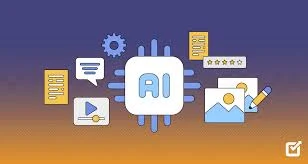Introduction
AI writing tools like ChatGPT, Jasper, and Copy.ai are revolutionizing content creation. They allow businesses and bloggers to generate articles quickly, but there’s a catch—Google is cracking down on low-quality AI content to maintain search integrity. If not used correctly, AI-generated content can trigger Google penalties, leading to lower rankings or even deindexing from search results.
In this guide, we’ll explore how to create AI-assisted content that ranks well on Google without penalties by following best practices and SEO guidelines.
Understanding Google’s Guidelines on AI Content
Google does not explicitly ban AI-generated content. However, it does emphasize quality, originality, and user value. The key to avoiding penalties lies in understanding Google's EEAT principles:
EEAT: What Google Looks for in AI Content
- Expertise – Content should demonstrate deep knowledge of the topic.
- Experience – Real-world insights and firsthand experience matter.
- Authoritativeness – Content should be credible and sourced from reliable data.
- Trustworthiness – Transparency and fact-checking are crucial.
Quality Content vs. Spammy AI Content
- High-Quality AI Content: Well-researched, informative, structured, and useful.
- Spammy AI Content: Overoptimized, repetitive, keyword-stuffed, or misleading.
To satisfy Google’s ranking algorithm, AI-generated content should be refined, fact-checked, and supplemented with human expertise.
📌 Learn more about cost-effective cloud solutions for small businesses.Best Practices for AI-Generated Content
1. Combine AI with Human Editing
AI-generated content should never be published without manual review and enhancement. Here’s how:
- Proofread and refine AI-generated drafts.
- Ensure grammar, clarity, and coherence are up to human standards.
- Add examples, case studies, and storytelling elements.
2. Add Personal Insights and Expertise
Google values original insights. Instead of publishing AI-generated text as-is:
- Inject personal experiences or industry knowledge.
- Include quotes from experts or links to credible sources.
- Ensure content aligns with real-world data and trends.
3. Use AI for Research, Not Full Automation
While AI can generate drafts, relying entirely on automation can result in generic, low-value content. Instead, use AI for:
- Keyword research and content planning.
- Generating outlines and ideas.
- Summarizing research, but always fact-check the AI’s output.
4. Proper Formatting and Internal Linking
Well-structured content improves readability and SEO. Ensure:
- Headings (H1, H2, H3) are used appropriately.
- Short paragraphs and bullet points enhance readability.
- Internal links connect to related pages and authoritative sources.
SEO Optimization for AI Content
1. Keyword Research Strategies
Use AI-powered SEO tools (Ahrefs, SEMrush, SurferSEO) to find:
- Long-tail keywords with lower competition.
- User intent-based queries that match what people are searching for.
- Semantic keywords to enhance topic relevance.
2. Avoiding Duplicate Content Issues
AI-generated content can sometimes be too similar to existing pages. To avoid duplicate content penalties:
- Rewrite sections in your own words.
- Use tools like Copyscape or Grammarly’s plagiarism checker.
- Add unique insights and perspectives that AI alone cannot generate.
3. Improving Readability for Users
Google prioritizes user experience. Make AI-generated content more engaging by:
- Breaking text into skimmable sections.
- Using simple, clear language.
- Adding visuals like infographics, images, and charts.
Conclusion: AI + Human Collaboration is the Future
AI content writing is not a shortcut to SEO success—it’s a tool for efficiency. The key to ranking on Google without penalties is human-AI collaboration. By combining AI-generated drafts with human expertise, SEO optimization, and originality, you can create high-quality content that ranks well.
🔹 Ethical AI use is the future of content marketing. Leverage AI, but never neglect the human touch!
📌 Need help optimizing AI content for SEO? Let’s discuss in the comments! 🚀
#AIContentSEO #GoogleRanking #ContentMarketing #SEOTips

Comments